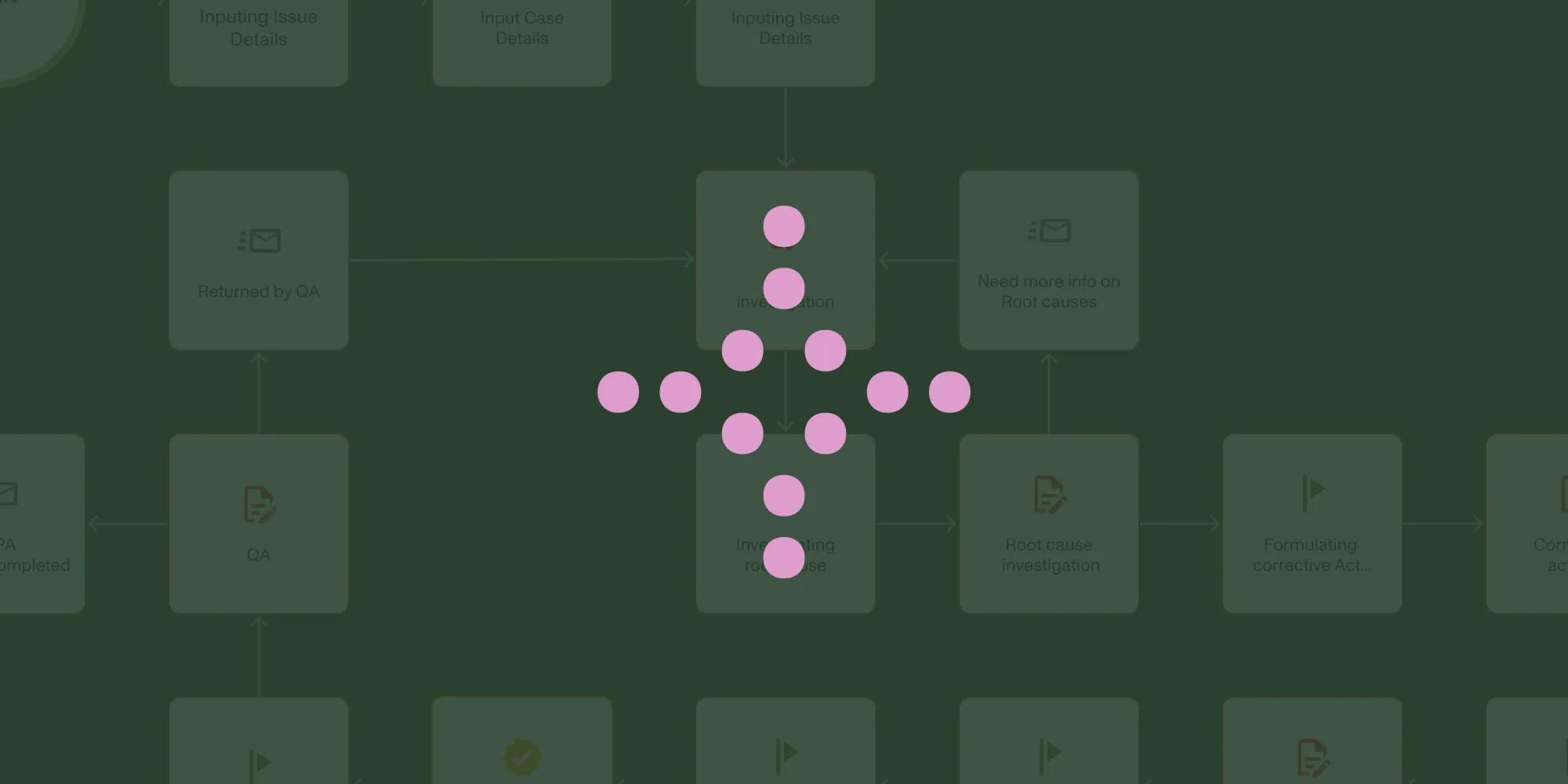What is operations software? | Streamline business operations
Table of contents

Operations software helps businesses automate and manage internal processes across teams like HR, finance, IT, and customer service. It reduces manual work, improves visibility, and accelerates workflows like approvals, request routing, compliance, and vendor onboarding. Whether you’re a startup or an enterprise, operations software can streamline your business and scale your internal tooling without writing code.
Operations software — also called operations management software — is designed to streamline internal business processes. It automates repetitive tasks, improves cross-team visibility, and helps organizations run more efficiently at scale.
From approvals and compliance to vendor management and internal service requests, operations software replaces ad hoc workflows like spreadsheets and email chains with structured, automated systems.
What is operations software?
Operations software is used to orchestrate, automate, and monitor internal processes. It spans departments — HR, finance, marketing, IT, legal, and support — and serves a wide range of business functions, including:
- Internal request handling
- Workflow automation
- Form submission and routing
- SLA tracking and escalations
- Compliance process orchestration
- Custom internal tooling
Where ERP software focuses on high-level planning and analytics, operations software gets into the nitty-gritty of daily tasks — connecting people, data, and processes in real time.
Explore workflow automation for operations.
Why modern teams rely on operations tools
The operations function — often led by BizOps, RevOps, or product ops — is about more than just keeping the lights on. It’s about driving scalable, repeatable, and data-driven processes across departments.
Operations software enables this by:
- Automating repetitive tasks (e.g. approvals, data entry)
- Connecting tools and teams across SaaS apps
- Creating dashboards and reports to track performance
- Reducing errors and ensuring compliance
- Responding faster to internal requests and escalations
For many teams, operations software becomes the internal nervous system of the organization.
Operations software examples in action
Example 1: Pharmaceutical regulatory automation A biotech company uses operations software to automate its regulatory review process. Instead of routing documents via email and printing PDFs, the team builds a digital workflow to route documents, collect approvals, and log timestamps for audits. This reduces review cycle time by 60 percent and cuts launch delays.
Example 2: Telecom licensing workflow A telecom operator receives dozens of requests daily from manufacturing partners to co-brand mobile devices. To eliminate delays and ensure consistent brand reviews, the company uses operations software to build a vendor-facing portal with structured forms, file uploads, and approval routing. The result is faster decisions, fewer errors, and more revenue.
Example 3: RevOps lead handoff process The revenue operations team at a SaaS company uses operations software to automate the SDR-to-AE handoff. When a lead hits MQL status in the CRM, it triggers a workflow that creates a task for the AE, enriches the lead with product usage data, and alerts sales management if the lead remains untouched for 24 hours.
Key features of modern operations platforms
The best operations software platforms share common features designed to simplify and standardize internal processes, outlined below.
Visual workflow builder Drag-and-drop tools to design processes without code. Define routing, rules, escalations, and integrations.
Task and SLA management Assign, track, and escalate tasks based on status, priority, or deadlines — across teams or business units.
Self-service forms and portals Create structured intake forms or service portals to streamline requests from employees, vendors, or customers.
Audit logs and compliance tools Every action is tracked for audit readiness. Ideal for industries with FDA, SOC 2, or ISO requirements.
Custom integrations Connect seamlessly with CRMs, ERPs, HRIS, and other platforms through APIs, webhooks, or native connectors.
Real-time dashboards and reporting Monitor operational KPIs, identify bottlenecks, and continuously improve processes based on data.
Mobile and remote access Give distributed teams and field workers the ability to engage with workflows on the go.
Types of operations software
Operations platforms vary by deployment, scale, and industry focus. Here’s a breakdown:
No-code operations platforms (e.g. Nutrient) Empower non-developers to build automated processes and internal tools using visual builders and prebuilt templates.
Workflow automation tools (e.g. Nutrient, Zapier, Make) Focus on event-driven workflows that span SaaS apps, approvals, and data movement.
ERP-adjacent platforms (e.g. ServiceNow, Oracle NetSuite Workflows) Built for enterprise-grade operations, with native integrations and governance features.
Industry-specific solutions (e.g. lab automation, clinical ops, logistics platforms) Tailored to unique needs, such as chain-of-custody tracking, lab approvals, or fleet coordination.
Is operations software right for you?
If your team struggles with:
- Email-based approvals
- Manual data entry
- Spreadsheet handoffs
- Missed SLAs
- Collective knowledge and process gaps
…then operations software can provide structure, automation, and clarity.
FAQ
Operations software is a category of tools that help manage, automate, and streamline internal business processes across teams.
Operations software is used by operations, IT, HR, finance, marketing, customer support, and compliance teams — any group that manages repeatable internal processes.
ERP handles planning and resource allocation at the macro level. Operations software handles day-to-day execution and internal tooling at the micro level.
Yes. Even small teams can automate approvals, streamline onboarding, and reduce busywork with lightweight operations tools.
Most companies see ROI in the form of reduced manual labor, faster SLAs, fewer errors, better compliance, and more efficient cross-functional coordination.







